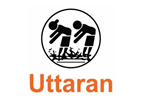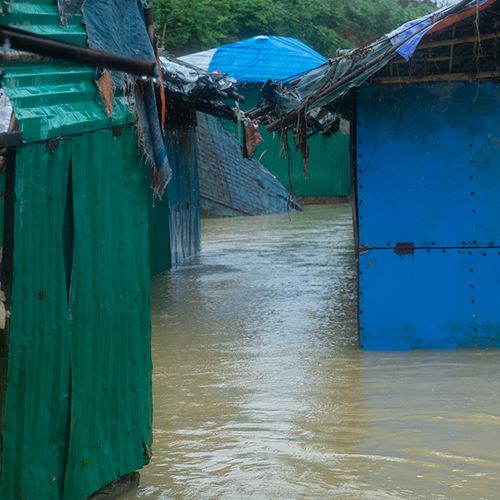
Promoting Climate Change Adaptation & Resilient Practices in Southern Coastal Areas in Bangladesh
Bangladesh is one of the most vulnerable countries in the world to climate change and the coastal communities, one of the poorest in Bangladesh, are losing lands and livelihoods due to cyclone, floods, and tidal surges. The main objective of the project is to enhance the economic and environmental wellbeing of the climate change-affected people in this region.

Bangladesh - one of the worlds most vulnerable countries to climate change
Bangladesh is one of the most vulnerable countries in the world to climate change due to geographical location and geo-morphological conditions. Bangladesh experiences extremely disastrous situation like cyclone, flood, saline water intrusion, water logging, heavy rainfall, river erosion, storm surge, etc. that occur frequently in the coastal part of Bangladesh. The coastal communities, one of the poorest in Bangladesh, are losing lands and livelihoods due to cyclone, floods, and tidal surges and migrating inwards due to rise in sea level, coastal inundation. Besides, existing vulnerabilities of communities have only been compounded and negatively impacted livelihood opportunities as per the Multi-Hazard Risk Analysis and have resulted in the displacement of marginal populations.
Communities in Khulna and Satkhira districts and coastal zone mainly depend on the natural resources of Sundarbans (Largest Mangrove in the world) for their living. Social conflicts are reported due to over competition for the limited forest resources, leading to protection risks. Besides, women and girls have very limited access to WASH which also increases protection risks and communities remain prone to water borne diseases. Displaced households are more likely to report having adopted negative coping mechanisms (e.g., selling livestock below the market price, reducing meal portion, taking high-interest loans, stopping schooling), which only increases pressure on livelihood and access to services in the coastal area and forced displacement. Therefore, integrated intervention is required to strengthen the resilience of the coastal communities to the impact of climate change and environmental degradation and reduce displacement and negative coping mechanisms.
Enhancing economic and environmental well-being
The main objective of the project is to enhance the economic and environmental wellbeing of the climate change-affected people in the coastal region of Bangladesh DRC and its partner UTTARAN will focus on sustainably reducing vulnerabilities and increasing the resilience of vulnerable communities with this pilot project, based on the assessed vulnerabilities and CCA options. With a focus on resilient and adaptive livelihoods, access to services including protection and climate-responsive approaches and complementing current govt. and sectoral actors.
The project will be implemented in 2 unions under the Satkhira district of Bangladesh which are located in the extreme southwest coastal region of Bangladesh and ranked highly vulnerable to cyclone, flooding and displacement according to IOM displacement cluster.
The project will contribute to three purpose areas:
- Economic recovery and safety from climate hazards.
- Access to improved facilities and services and.
- Resilience building through preparation and upscaling the innovation.
Our partner

Any questions? please contact:
Ranjan
Kumar Das
Livelihoods Manager - Bangladesh
Lila
Nath Bashyal
Head of Programme - Bangladesh